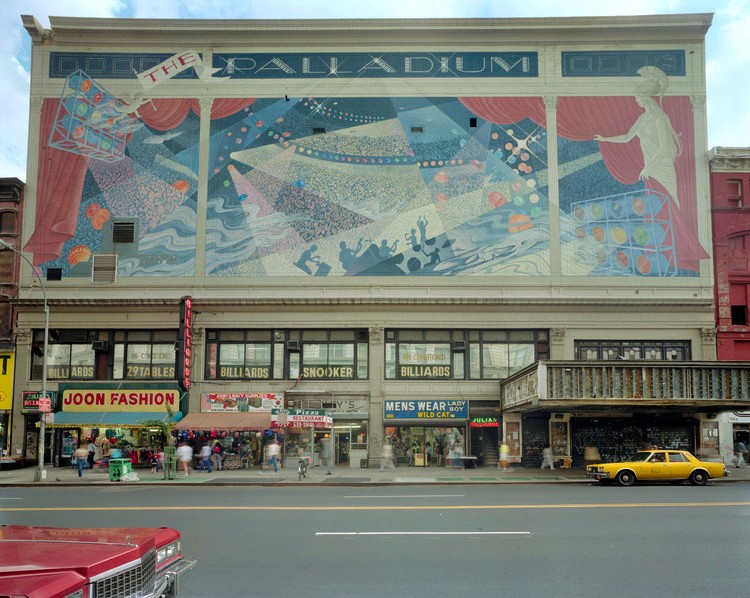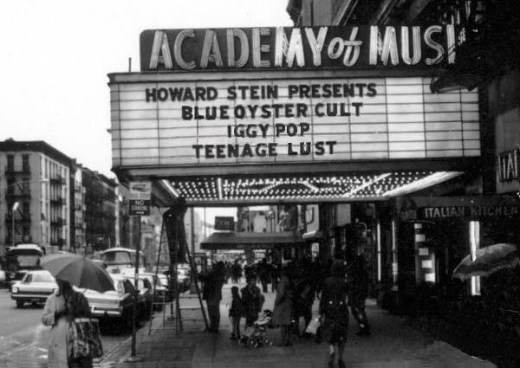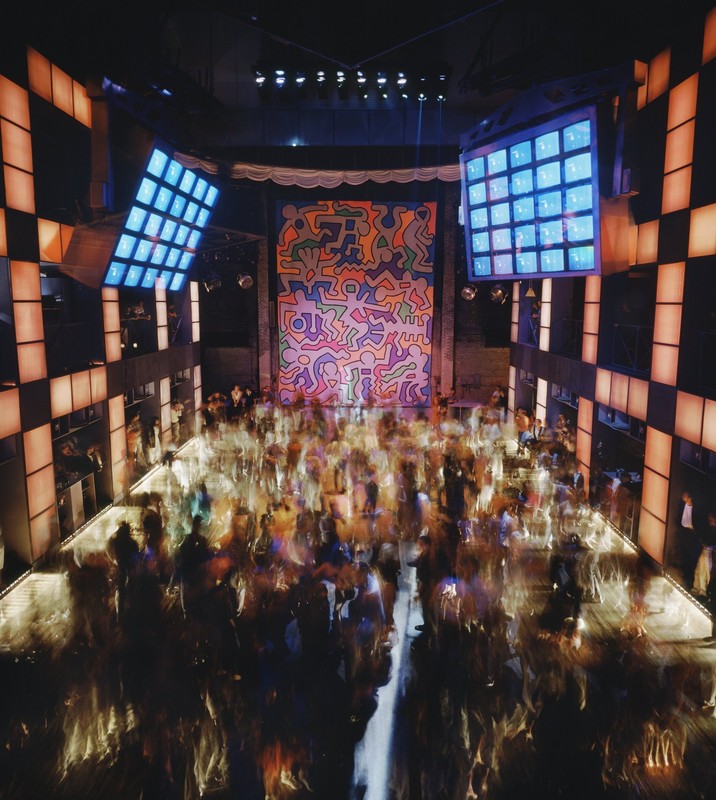Site of Palladium, 1976-1997 (Academy of Music)
Introduction
Text-to-speech Audio
Images
The Palladium's exterior

The club's marquee

Interior of the club

Backstory and Context
Text-to-speech Audio
In 1927, movie mogul William Fox built the Academy of Music, a 3,000 seat movie palace. The expansive venue was designed by architect Thomas W. Lamb. The Academy became one of the premier theaters in the Union Square entertainment districts and operated as a movie theater until the early 1970s.
Starting in the 1960s, the venue was also used as a live music venue. Once the Fillmore East closed in 1971, concerts became more common at the Academy building, which often showed movies during the day and hosted live performances at night. Promoter Sid Bernstein began bringing in some of the biggest British bands of the day, including the Rolling Stones and the Kinks. At a New Year's Eve show in 1973, the lineup featured Blue Oyster Cult, Iggy and the Stooges, and a suprise appearance by Kiss. During Kiss's performance, guitarist Gene Simmons set his hair on fire.
By 1976, the building was a full-time concert venue and was renamed the Palladium. On September 18, 1976, the newly-rechristened venue debuted with a live radio broadcast performance by the Band. As a full-time live music venue, the Palladium attracted legendary rock musicians, including the Grateful Dead, the Clash, Blondie, U2, and Bruce Springsteen. Other artists, including Lou Reed, Levon Helm, and Frank Zappa, recorded albums at the Palladium.
In 1985, the venue was converted into a multi-story nightclub by Steve Rubell and Ian Schrager, the impresarios behind legendary nightclub Studio 54. The building's interior was redesigned by Japanese architect Arata Isozaki and featured large murals by Keith Haring and Jean-Michel Basquiat. The reborn Palladium had a star-studded opening that presaged the next decade: the club became the place where the city's most famous residents--particularly those in the arts--went to see and be seen.
Notorious nightclub owner Peter Gatien operated the club from 1992 to 1997. It was a time when Gatien ruled much of the city's nightlife. In addition to Palladium, he also owned Club USA, Tunnel, and Limelight. During Gatien's tenure, Palladium developed a reputation as one of Manhattan's most raucous gathering spots before it closed in 1997.
The building was eventually purchased by New York University and demolished. The university built a residence hall--named Palladium Hall--on the site of the former nightclub.
Cite This Entry
Woodham, Rebecca. "Site of Palladium, 1976-1997 (Academy of Music) ." Clio: Your Guide to History. October 4, 2020. Accessed March 24, 2025. https://theclio.com/tour/1562/4
Sources
Franco, Jose Tomas . Arata Isozaki's Palladium Nightclub Through the Lens of Timothy Hursley , Arch Daily . March 7th 2019. Accessed October 4th 2020. https://www.archdaily.com/912757/arata-isozakis-palladium-nighclub-through-the-lens-of-timothy-hursley.
Mastropolo, Frank . "People Loved it Loud": Rockers Recall Academy of Music and Palladium , Bedford + Bowery . July 11th 2013. Accessed October 4th 2020. https://bedfordandbowery.com/2013/07/people-loved-it-loud-rockers-recall-academy-of-music-and-palladium/.
Bonfiglio , Jann. Academy of Music , Cinema Treasures . Accessed October 4th 2020. http://cinematreasures.org/theaters/1301.
Moskowitz, Sam . History Lost to NYU, Greenwich Village Society for Historic Preservation . March 27th 2018. Accessed October 4th 2020. https://gvshp.org/blog/2018/03/27/history-lost-to-nyu/.

